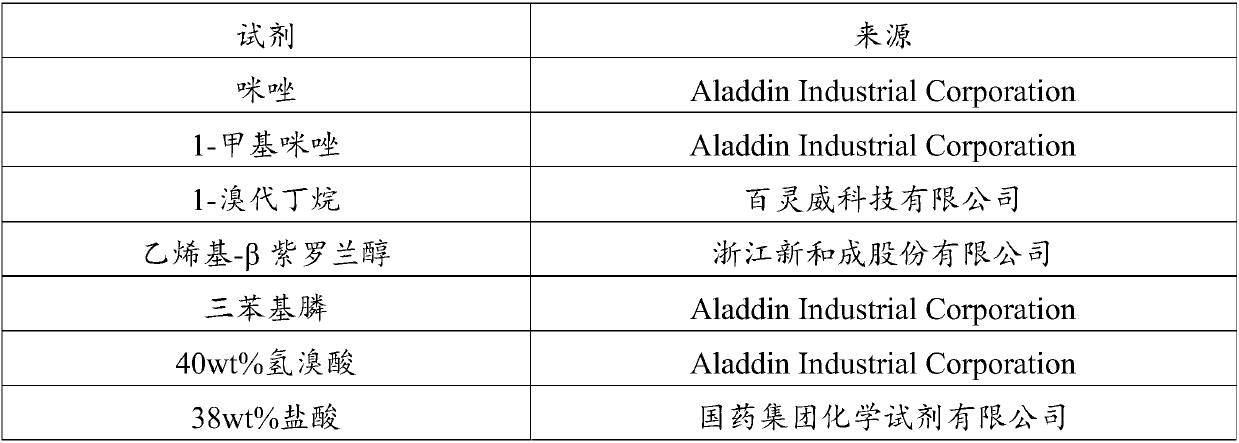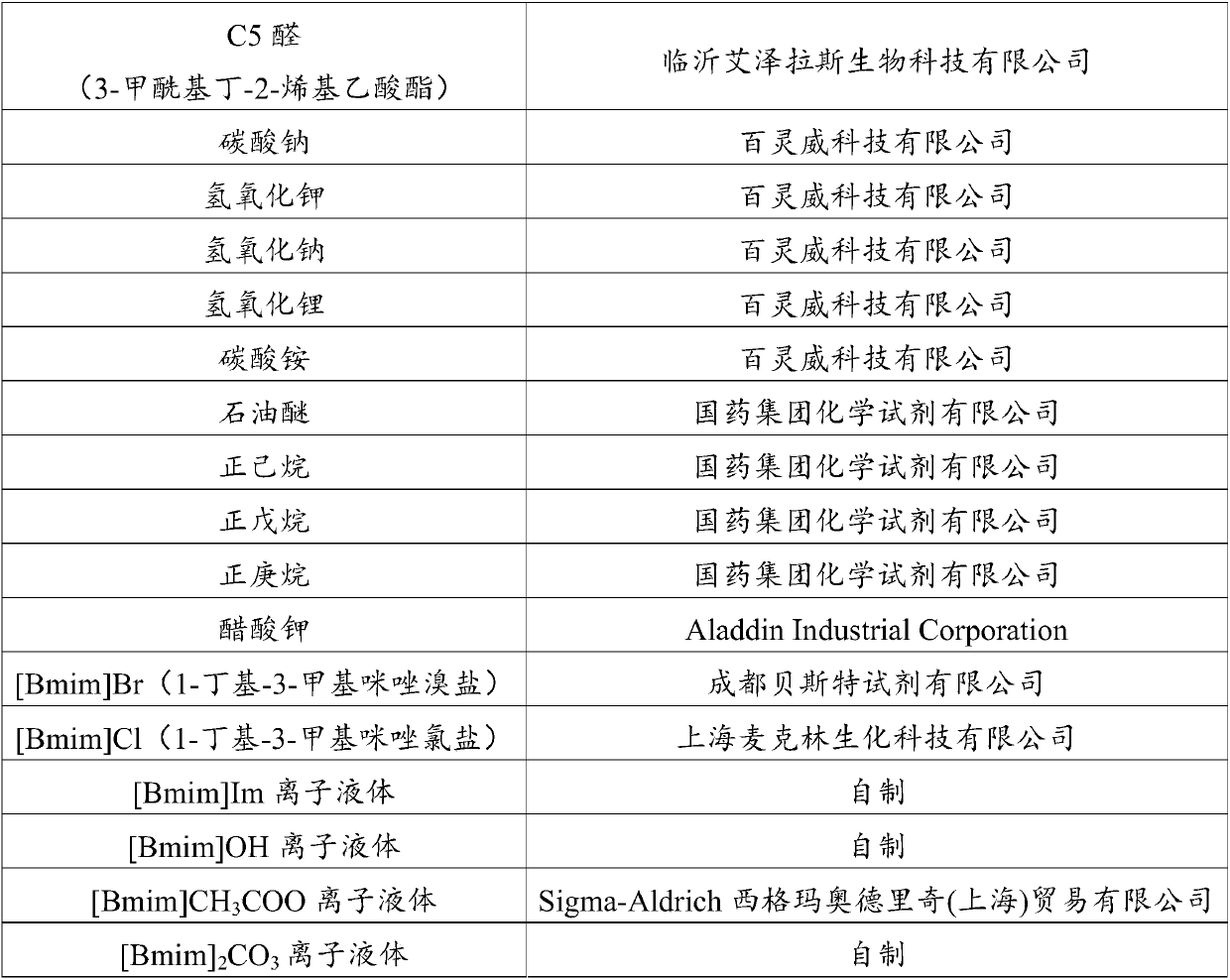Method for preparing vitamin A acetate
A technology of acetate and vitamin, which is applied in the field of preparing vitamin A acetate, can solve the problems of many side reactions, difficult product separation, high energy consumption, etc., and achieve the effects of reducing separation and purification operations, simple process operation, and shortened process flow
- Summary
- Abstract
- Description
- Claims
- Application Information
AI Technical Summary
Problems solved by technology
Method used
Image
Examples
Embodiment 1
[0061] (1) After the autoclave leak detection, add (264.5g, 1.01mol) triphenylphosphine and (96.8g, 38wt%, 1.01mol) hydrochloric acid wherein; 2 After 3 replacements, fill the autoclave with CO 2 Gas and start stirring, heat up so that the temperature in the autoclave is 45°C, and the pressure in the autoclave is maintained at 14MPa through a pressure regulating valve, and (220g, 1mol) vinyl-β ionol is pumped into the autoclave by an advection pump Carry out salt-forming reaction to prepare C15 phosphine salt.
[0062] (2) After 1 hour of salt-forming reaction, add (156.1g, 1.1mol) C5 aldehyde, (15.9g) [Bmim]OH ionic liquid and (1058g) solvent water into the high pressure reactor through a parallel flow pump, and then release the pressure to release Out of CO 2 , and mix the materials evenly.
[0063](3) Add (350mL) petroleum ether into the kettle, start stirring under nitrogen protection and heat to 35°C, then start to add lye (116.4g, 1.1mol of sodium carbonate and 550g o...
Embodiment 2
[0065] (1) After the autoclave leak detection, add (111g, 0.42mol) triphenylphosphine and (40.6g, 38wt%, 0.42mol) hydrochloric acid wherein; Use CO 2 After 3 replacements, fill the autoclave with CO 2 Gas and start stirring, heat up so that the temperature in the autoclave is 60°C, and the pressure in the autoclave is maintained at 25MPa through a pressure regulating valve, and (88g, 0.4mol) vinyl-β ionol is pumped into the high-pressure reaction by an advection pump A salt-forming reaction is carried out in the kettle to prepare C15 phosphine salt.
[0066] (2) After 2 hours of salt-forming reaction, add (65.3g, 0.46mol) C5 aldehyde, (53.3g) [Bmim] CH 3 COO ionic liquid and (890g) solvent water, then release pressure to release CO 2 , and mix the materials evenly.
[0067] (3) Add (890mL) n-heptane into the kettle, start stirring under nitrogen protection and heat to 50°C, then start to add lye (35.9g, 0.64mol of potassium hydroxide and 35g of water) into the kettle for Wi...
Embodiment 3
[0069] (1) After the autoclave leak detection, add (134.9g, 0.51mol) triphenylphosphine and (49.3g, 38wt%, 0.51mol) hydrochloric acid wherein; 2 After 3 replacements, fill the autoclave with CO 2 Gas and start stirring, heat up so that the temperature in the autoclave is 53°C, and the pressure in the autoclave is maintained at 20MPa through a pressure regulating valve, and (110g, 0.5mol) vinyl-β ionol is pumped into the high-pressure reaction by an advection pump A salt-forming reaction is carried out in the kettle to prepare C15 phosphine salt.
[0070] (2) After 1.5h of salt-forming reaction, add (80.2g, 0.56mol) C5 aldehyde, (32.4g) [Bmim]Im ionic liquid and (810g) solvent water in autoclave by advection pump, then release pressure Release CO 2 , and mix the materials evenly.
[0071] (3) Add (405mL) n-hexane into the kettle, start stirring under nitrogen protection and heat to 43°C, then start to add lye (26g, 0.65mol of sodium hydroxide and 100g of water) into the kett...
PUM
 Login to View More
Login to View More Abstract
Description
Claims
Application Information
 Login to View More
Login to View More - R&D
- Intellectual Property
- Life Sciences
- Materials
- Tech Scout
- Unparalleled Data Quality
- Higher Quality Content
- 60% Fewer Hallucinations
Browse by: Latest US Patents, China's latest patents, Technical Efficacy Thesaurus, Application Domain, Technology Topic, Popular Technical Reports.
© 2025 PatSnap. All rights reserved.Legal|Privacy policy|Modern Slavery Act Transparency Statement|Sitemap|About US| Contact US: help@patsnap.com


